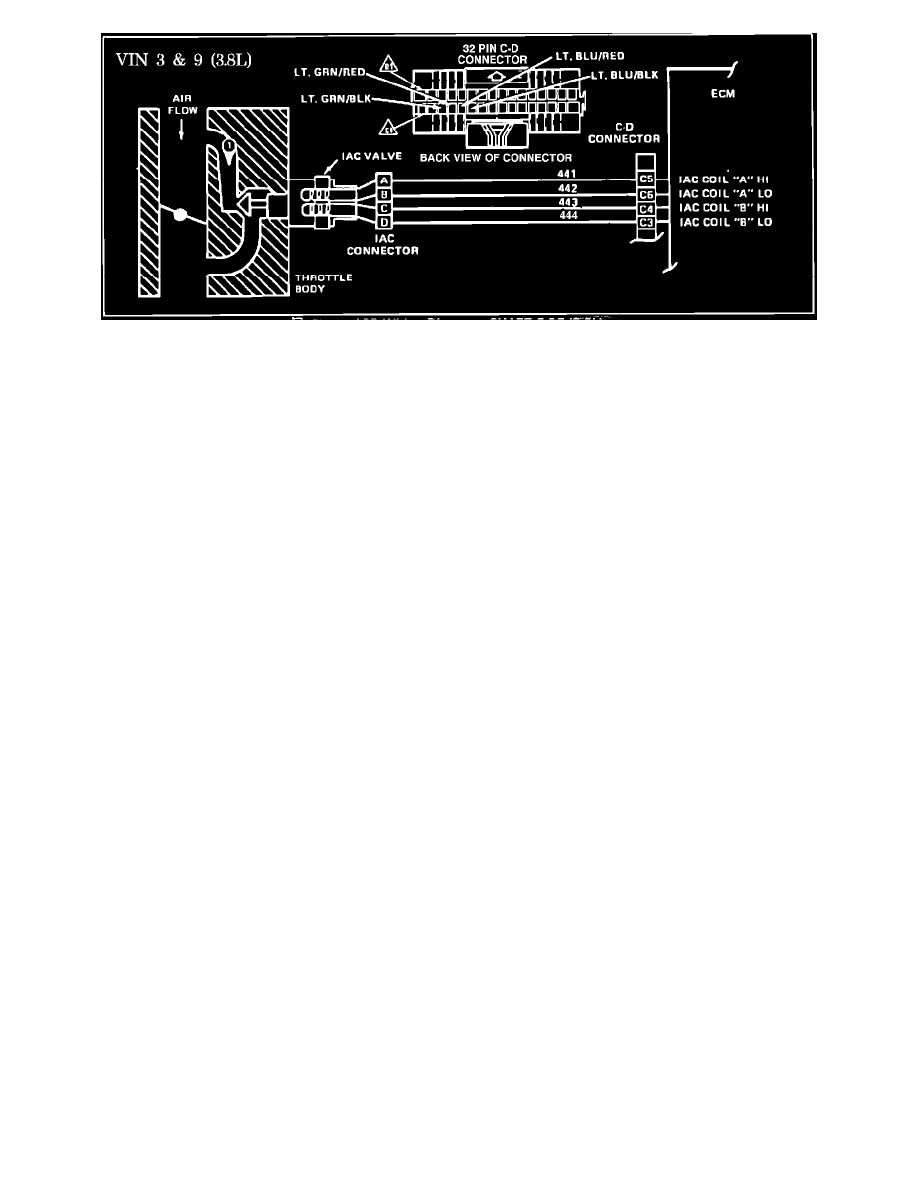Riviera V6-231 3.8L Turbo VIN 9 FI (1984)

Fig. 029 - WIRING DIAGRAM for Chart C-2C Idle Air Control. VIN 3, VIN 9
CHART C-2C, IDLE AIR CONTROL
The ECM controls engine idle speed by moving the IAC valve, to control air flow around the throttle plate. It does this by sending voltage pulses
(called "counts" or "steps") to the proper motor winding. The motor shaft and valve move a given distance for each pulse received.
a.
To increase idle speed - ECM sends enough counts to retract the IAC valve and allow more air to flow, until idle speed reaches the proper RPM.
This increases the ECM counts.
b.
To decrease idle speed - ECM sends enough counts to extend the IAC valve and reduce air flow. This will reduce the ECM counts.
Each time the ignition is turned on and then off again, the ECM will "reset" the IAC by sending enough counts to seat the valve. The fully seated valve
is the ECM reference Zero. A given number of counts are then issued to open the valve, and normal ECM control of IAC will begin. The number of
counts are then added by the ECM to increase idle speed, and subtracted to decrease. This is how the ECM knows what the motor position is for a given
idle speed.
The ECM uses the following information to control idle speed.
a.
Battery Voltage
b.
Coolant Temperature
c.
Throttle Position Sensor
d.
Vehicle Speed Sensor
e.
Mass Air Flow
f.
Engine Speed
g.
A/C Clutch Signal
NOTICE: Don't apply battery voltage across the IAC motor terminals. It will permanently damage the IAC motor windings.
1.
Be sure to disconnect the IAC valve prior to this test. The test light will confirm the ECM signal by a steady or flashing light, all circuits.
2.
Before replacing an ECM, be sure to check the resistance at the IAC motor windings. Failure to do so may result in a repeat ECM failure.
Engine idle can be adversely affected by the following:
a. Park/Neutral Switch - If the ECM thinks the car is always in neutral, idle speed will not be correct in drive range.
b. A leaking injector will cause poor idle quality due to excess fuel.
c. Vacuum leaks can cause higher than normal idle.
d. When the throttle shaft or throttle position sensor is binding or sticking in an open throttle position, the ECM does not know if the vehicle has
stopped, and does not control idle.
e. In addition to electrical control of EGR, be sure to examine the EGR valve for proper seating.
f.
Faulty battery cables can result in voltage variations. The ECM will try to compensate, which results in erratic idle speeds.
